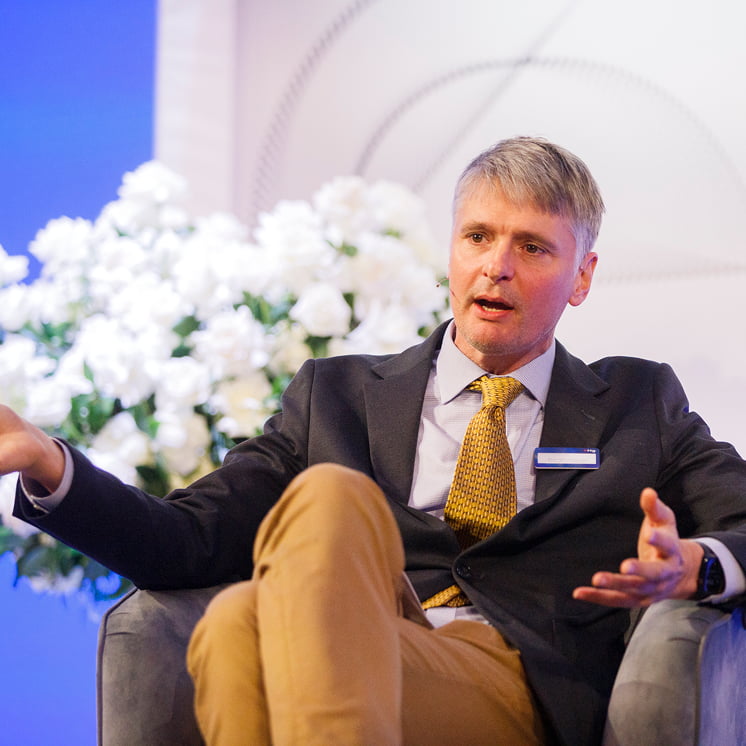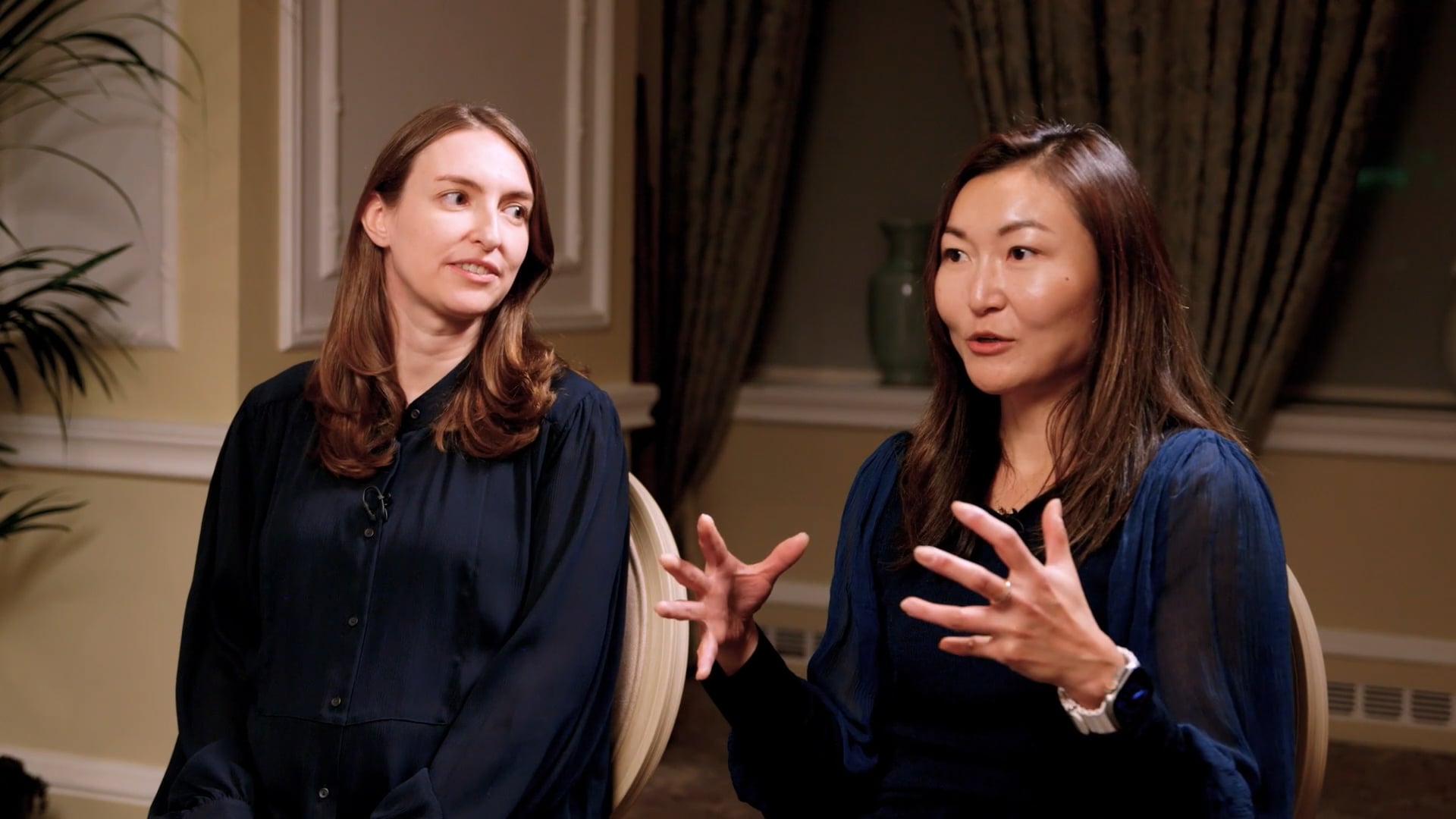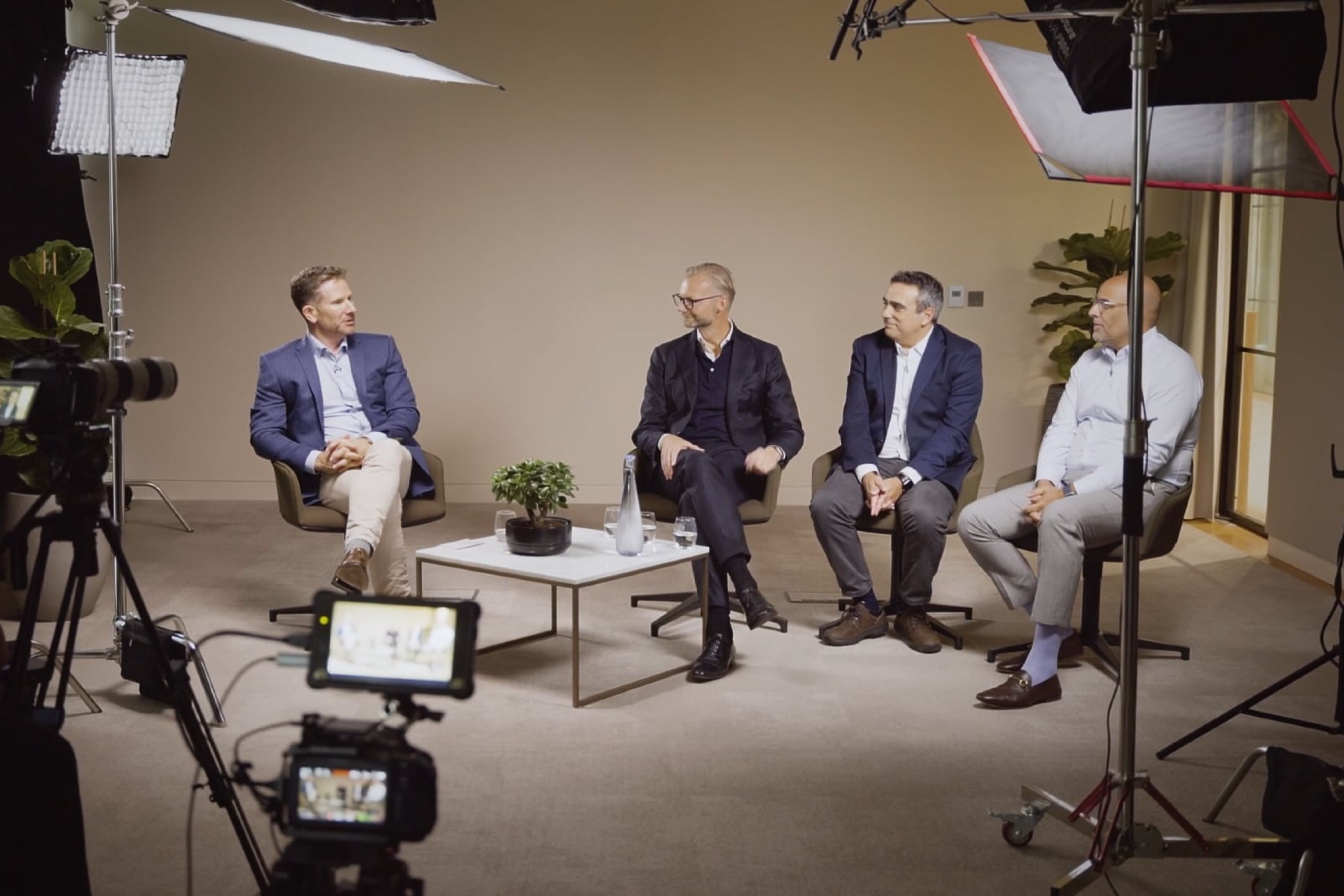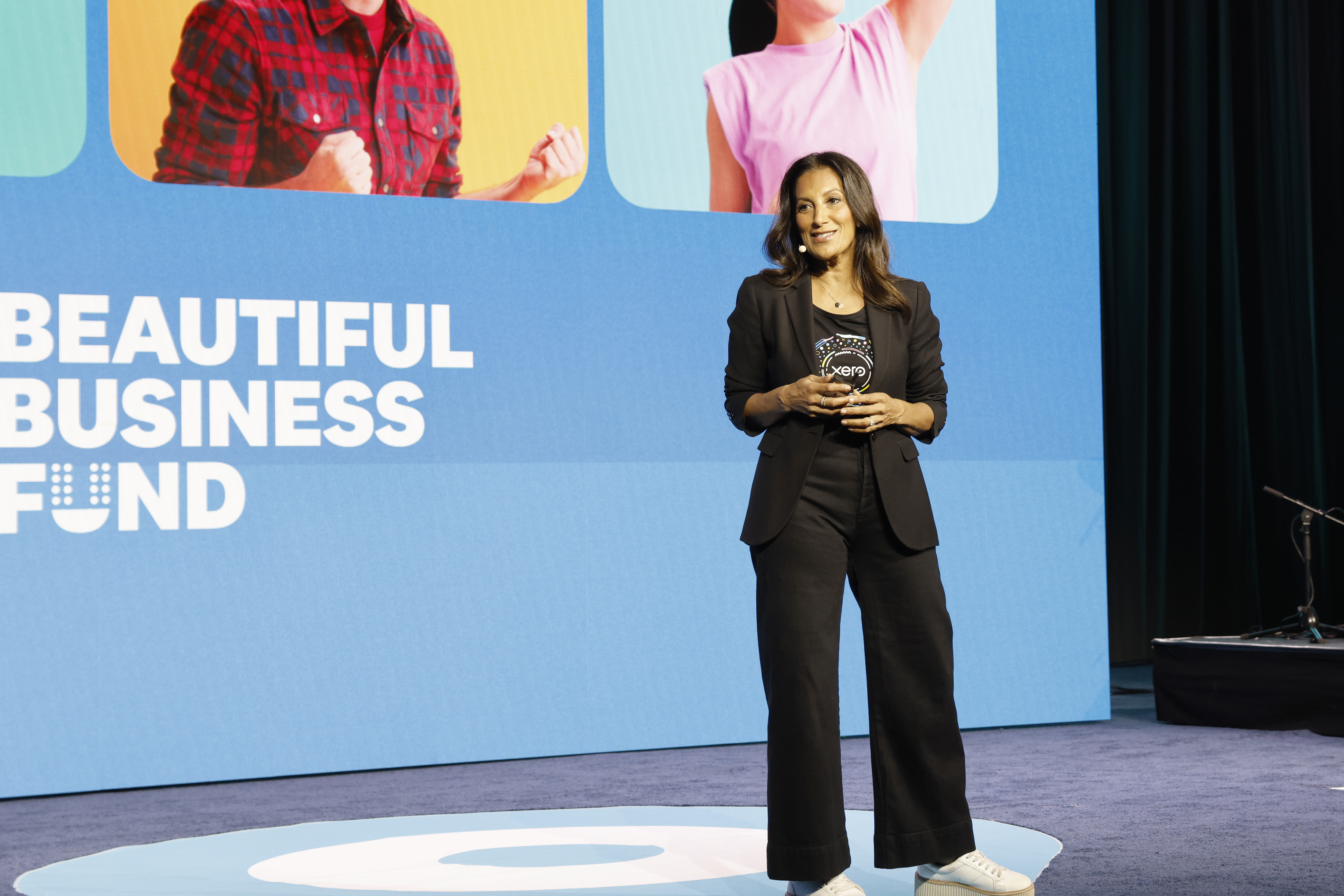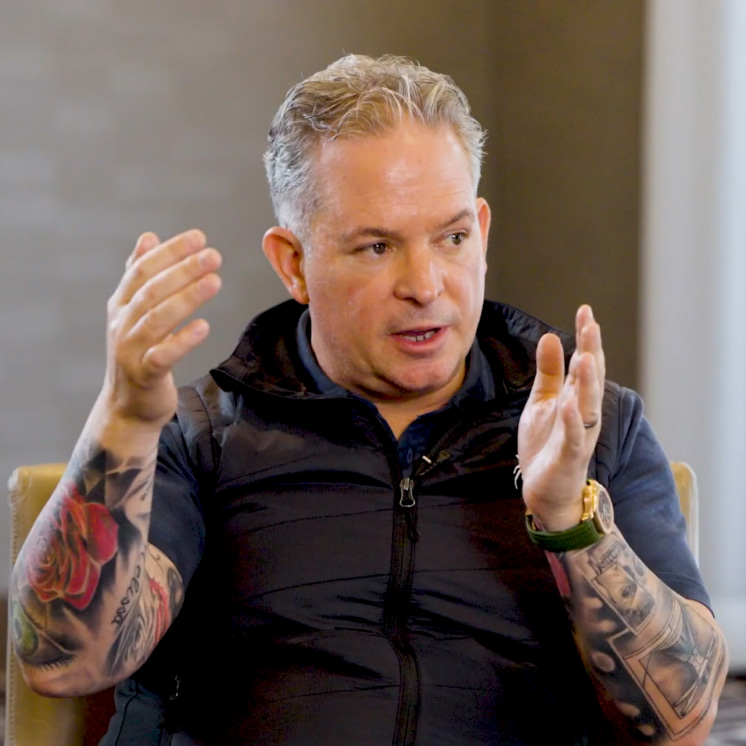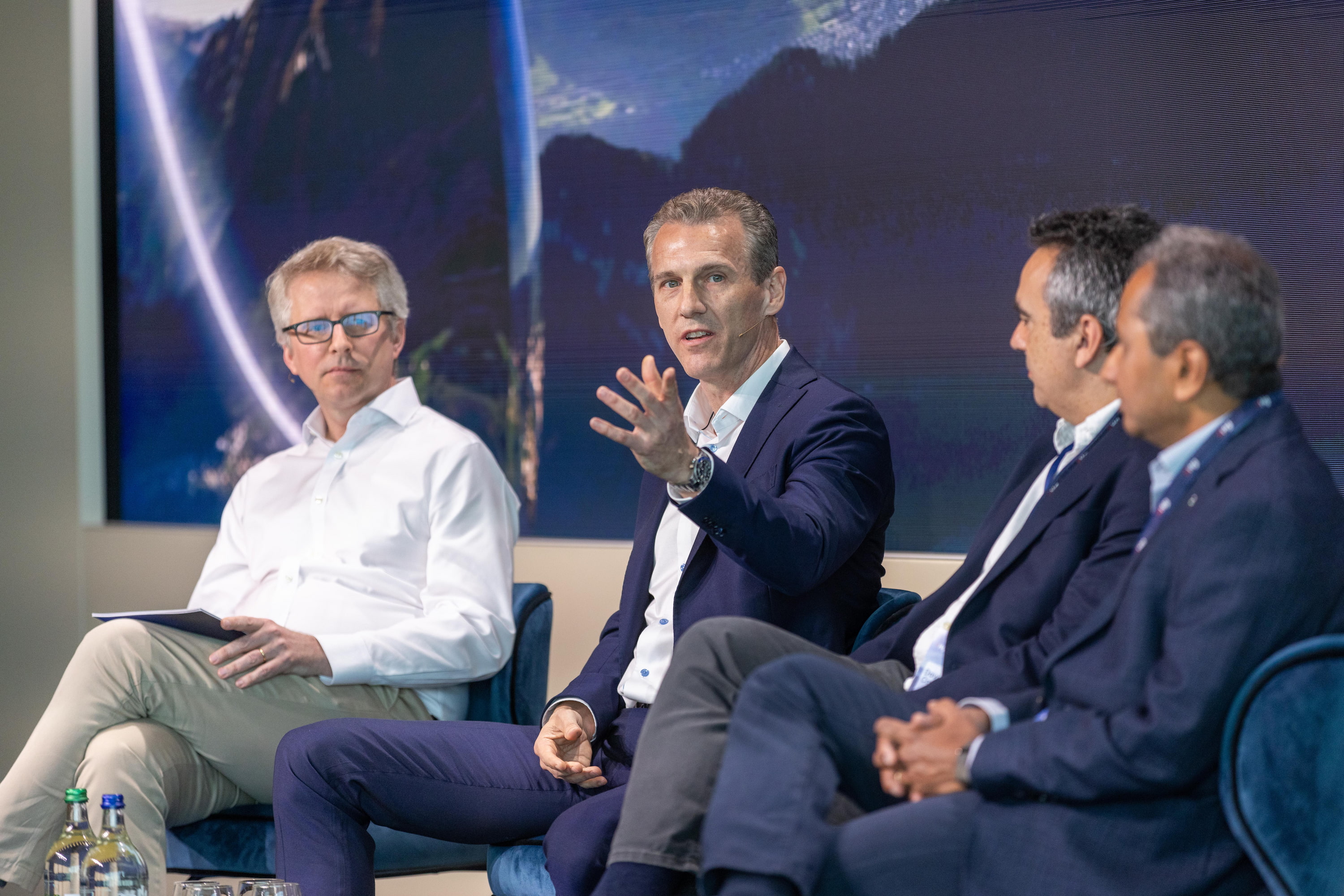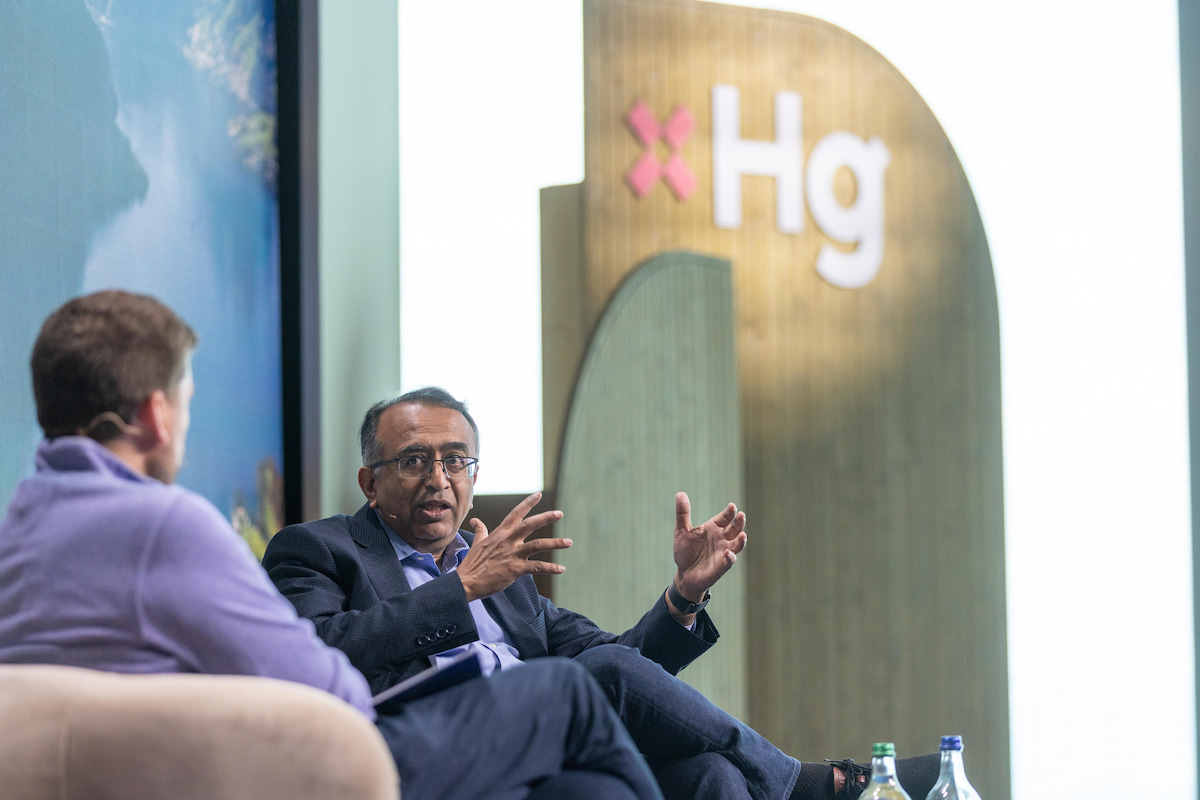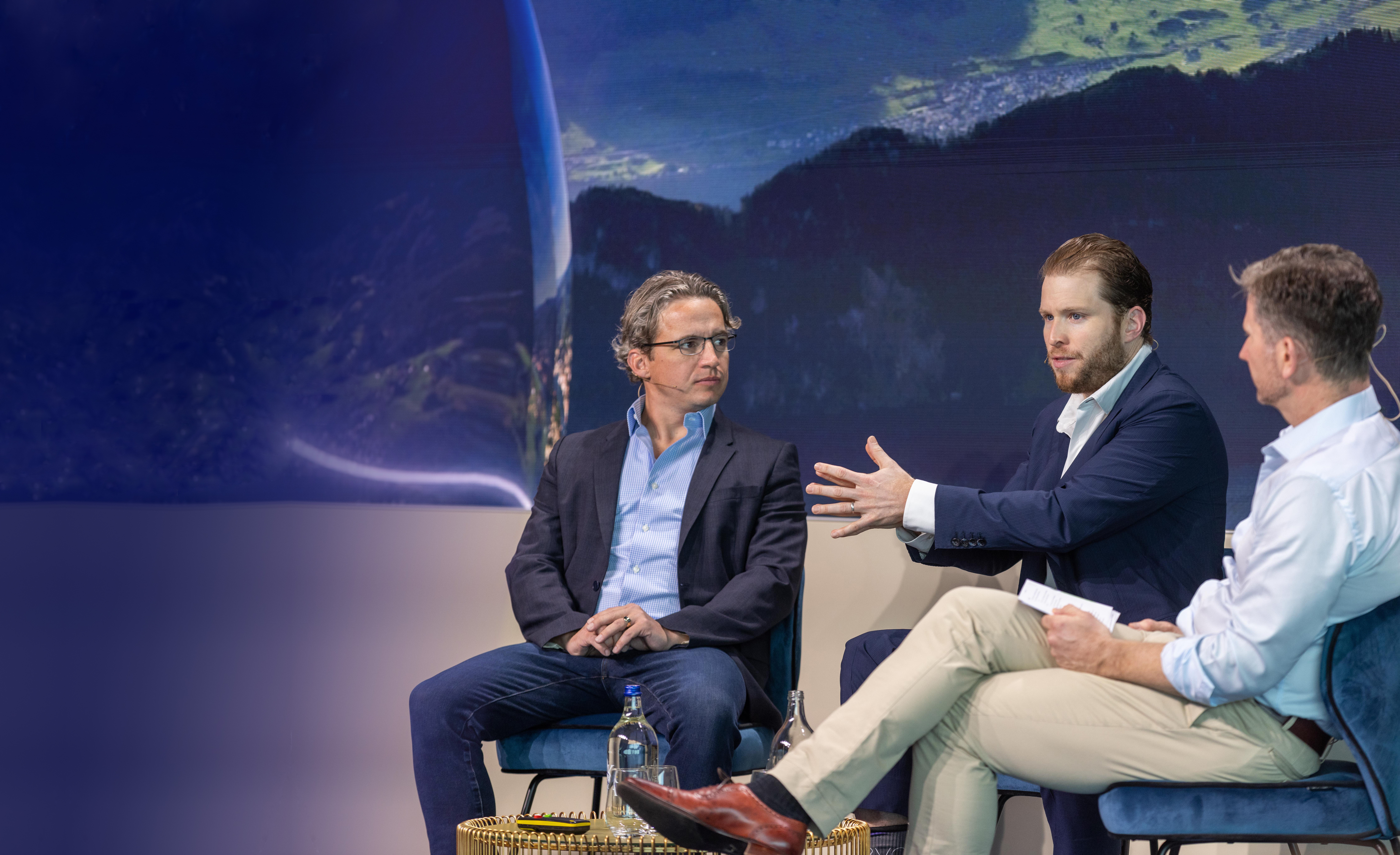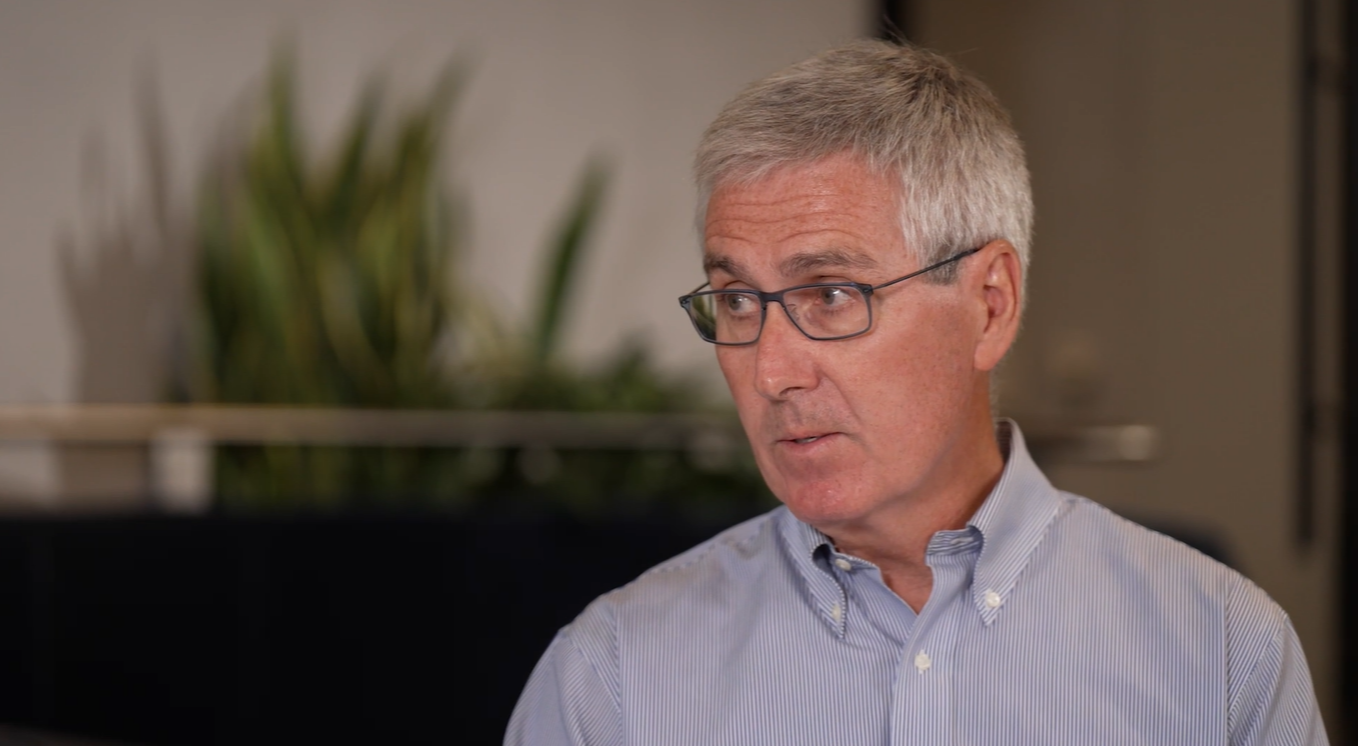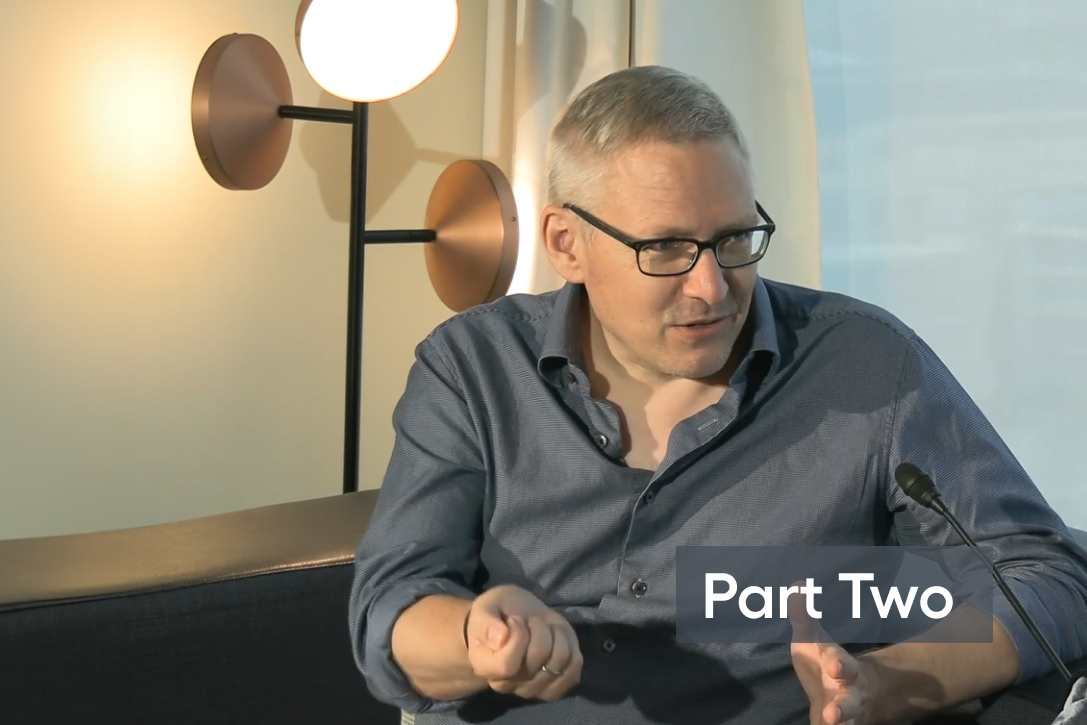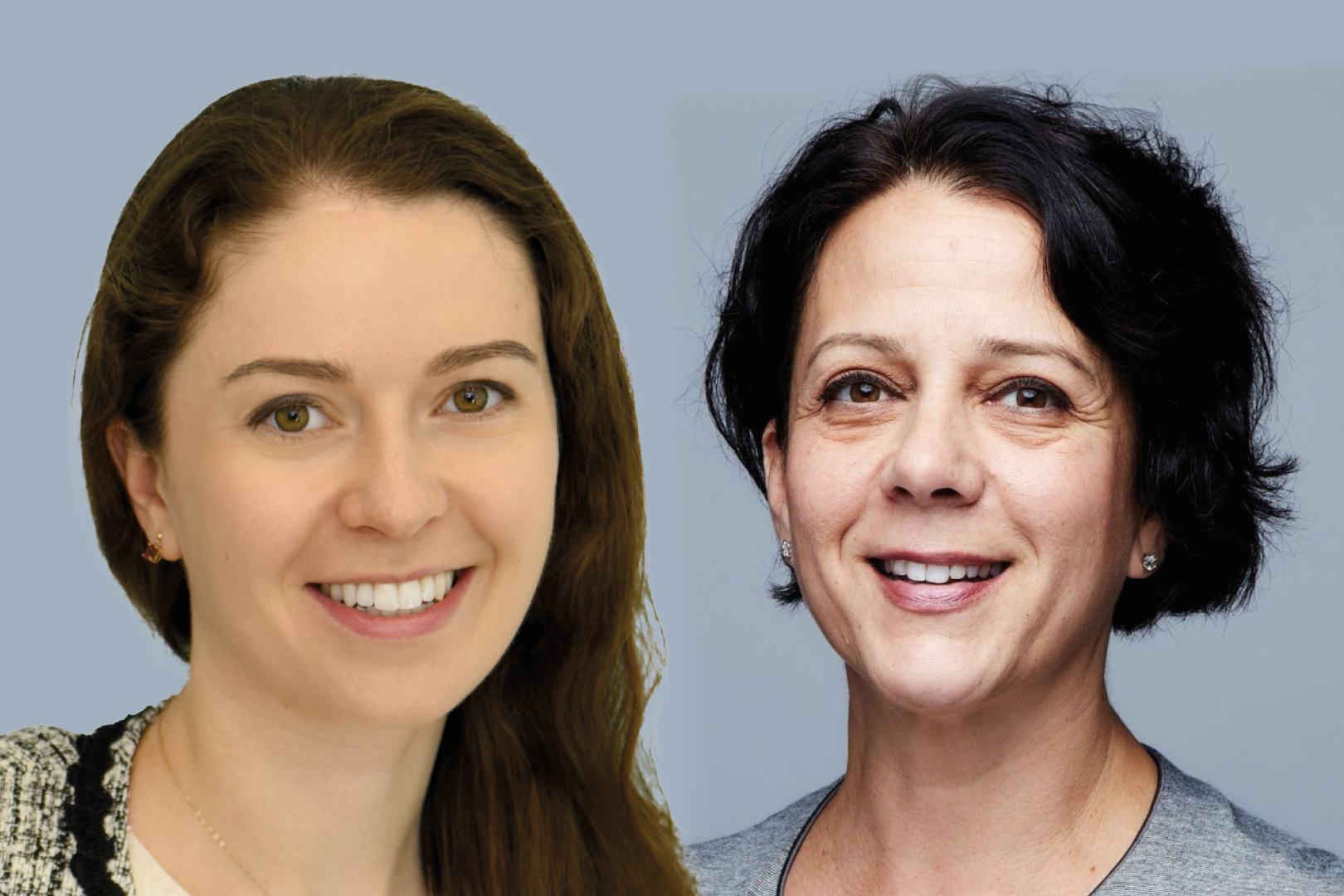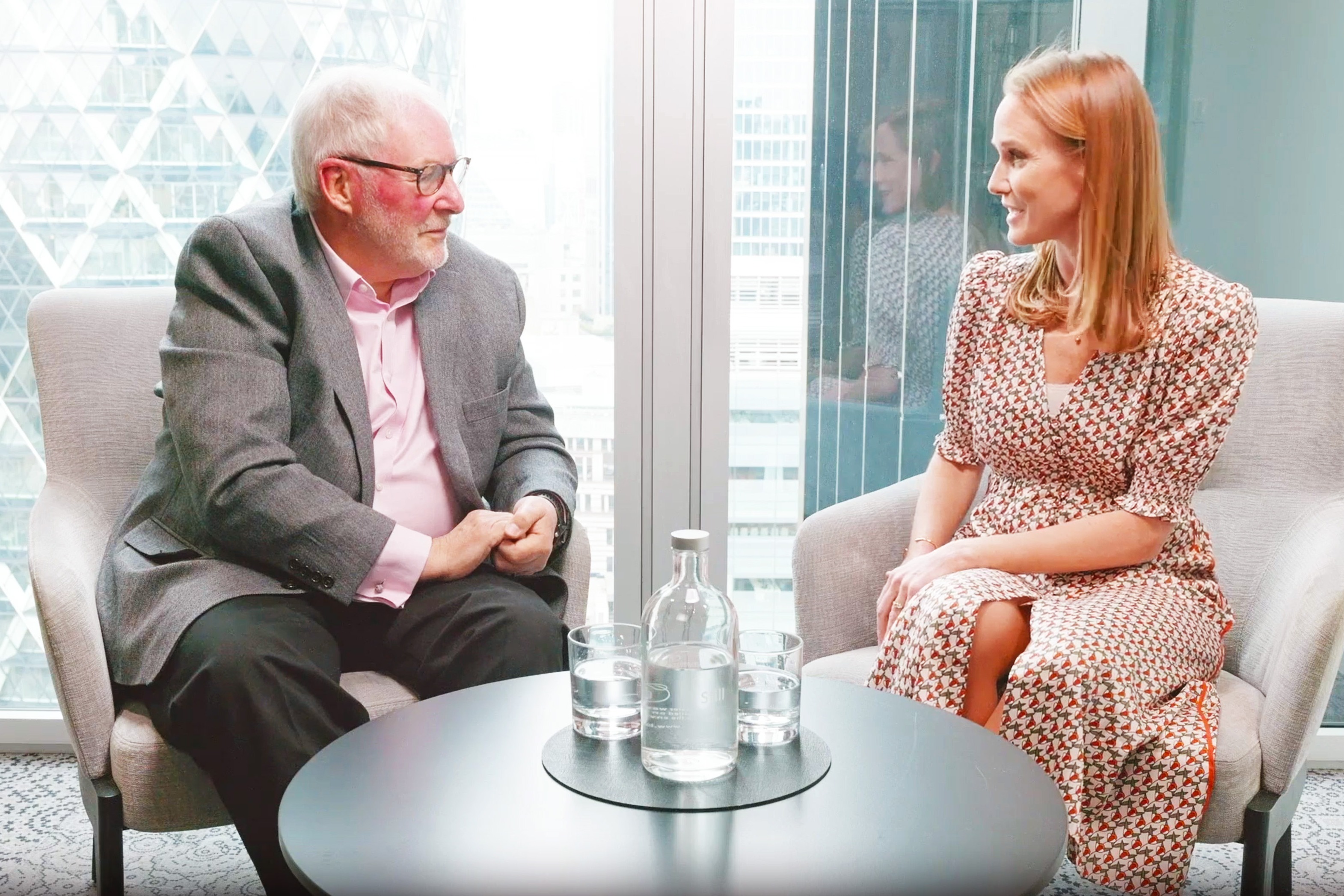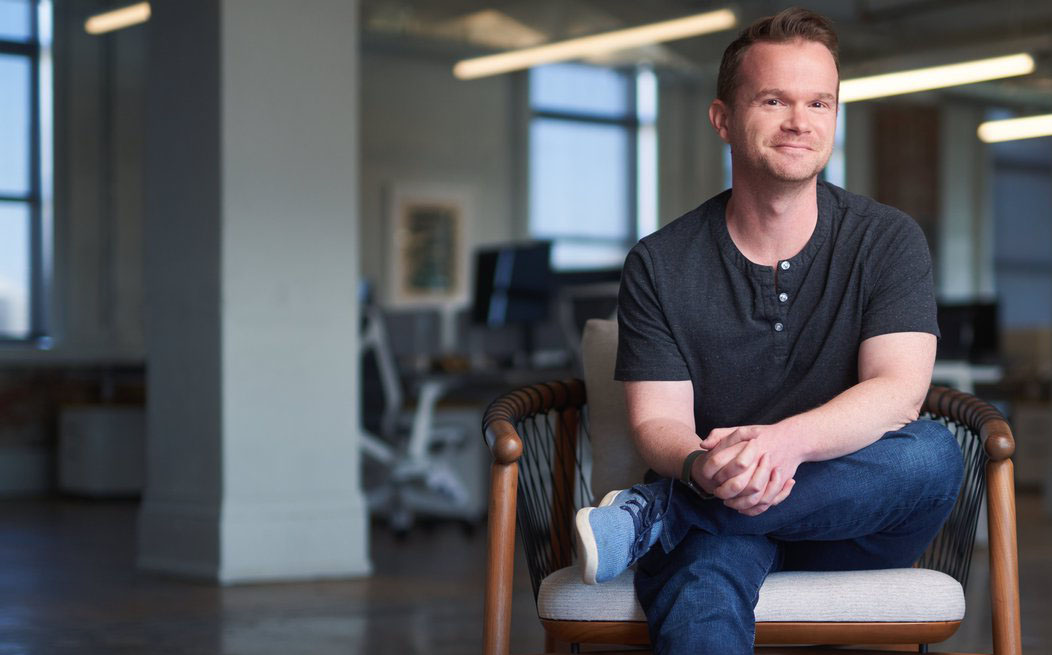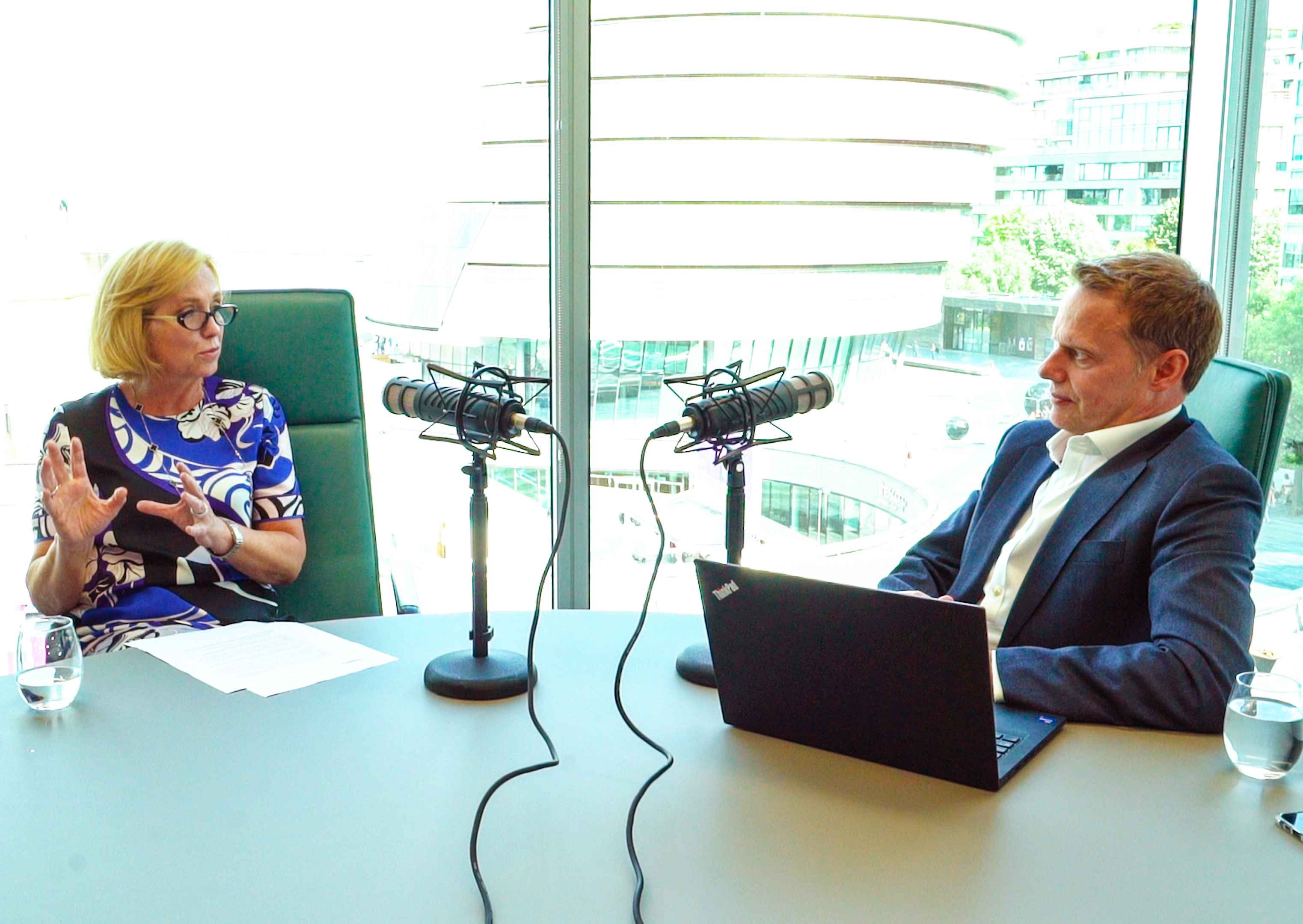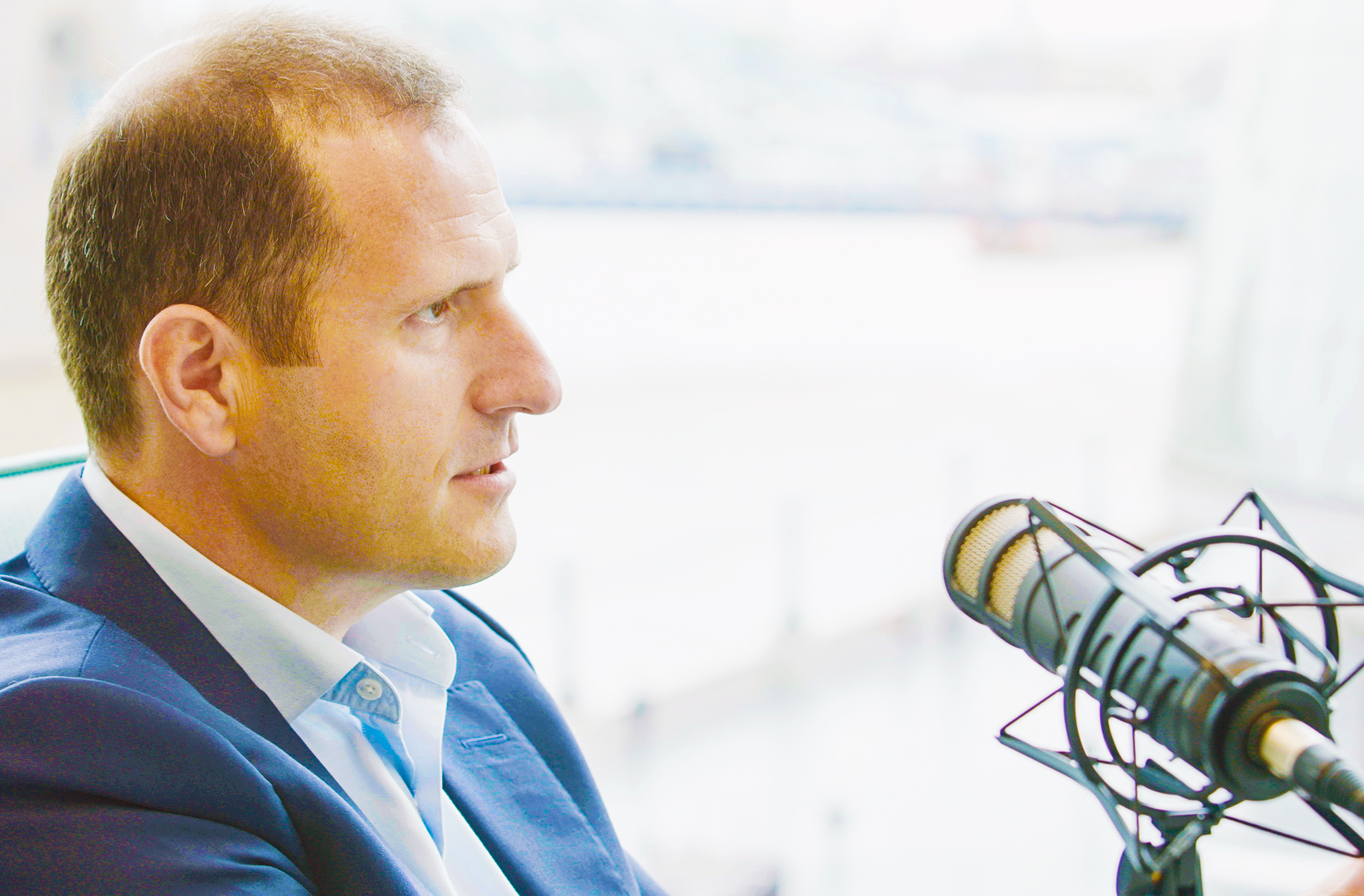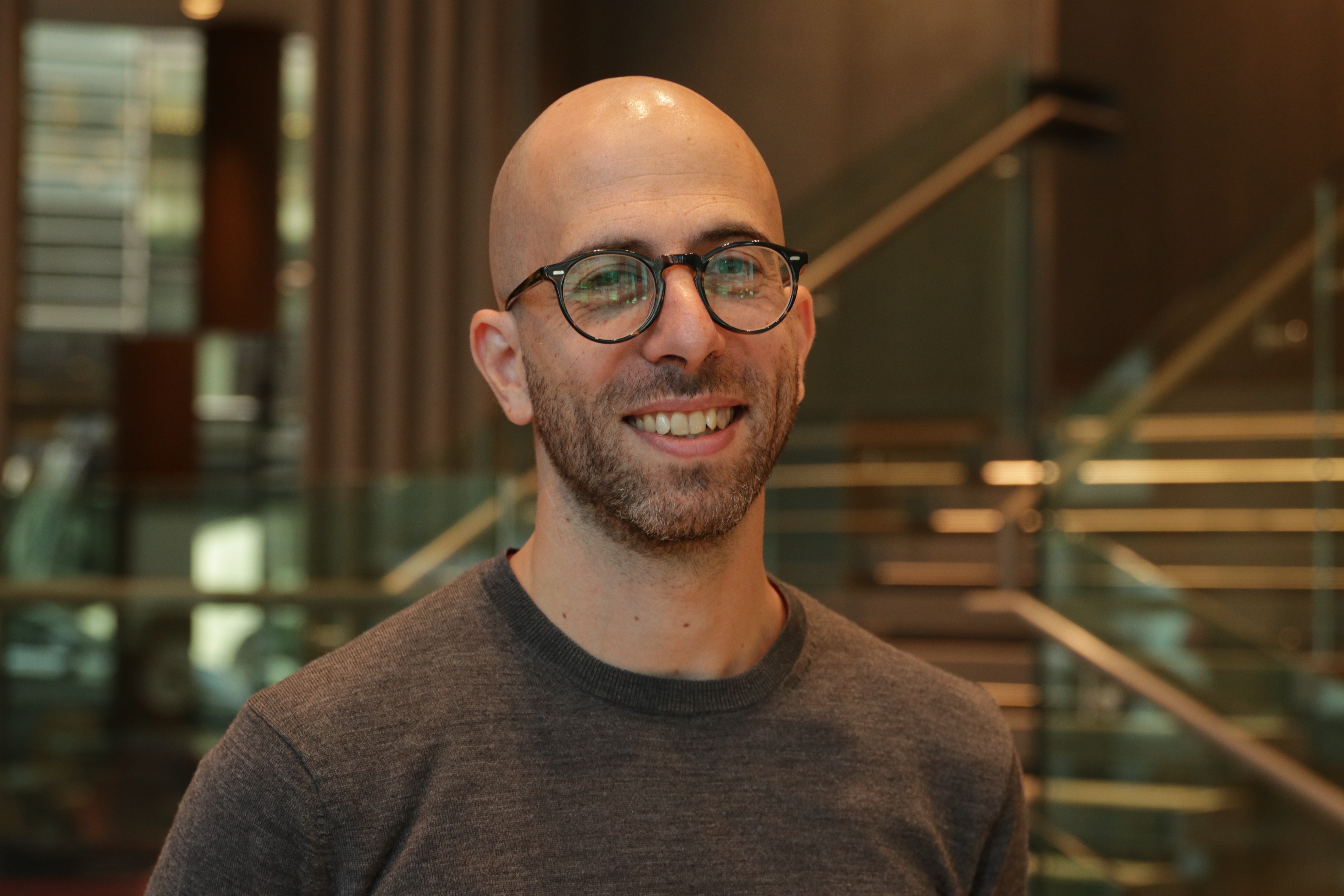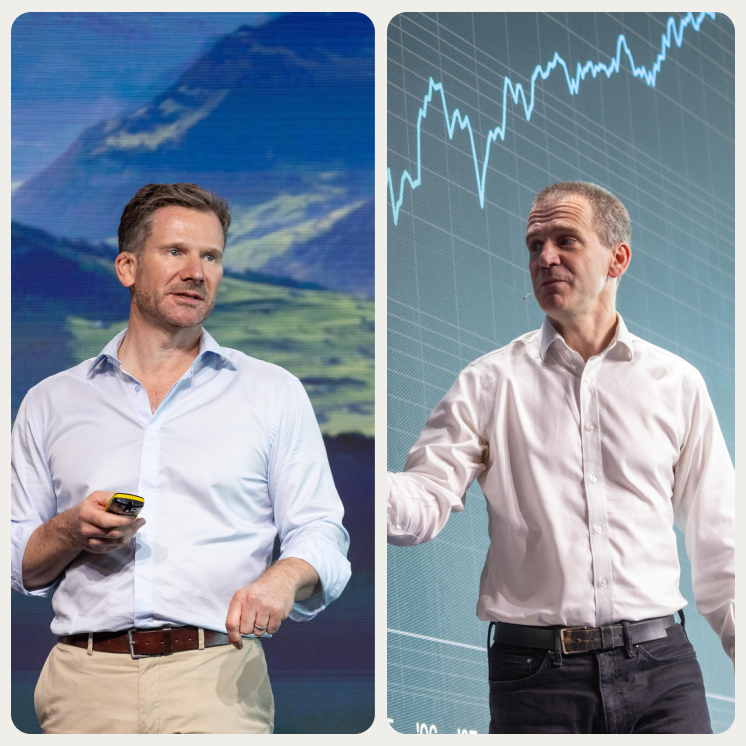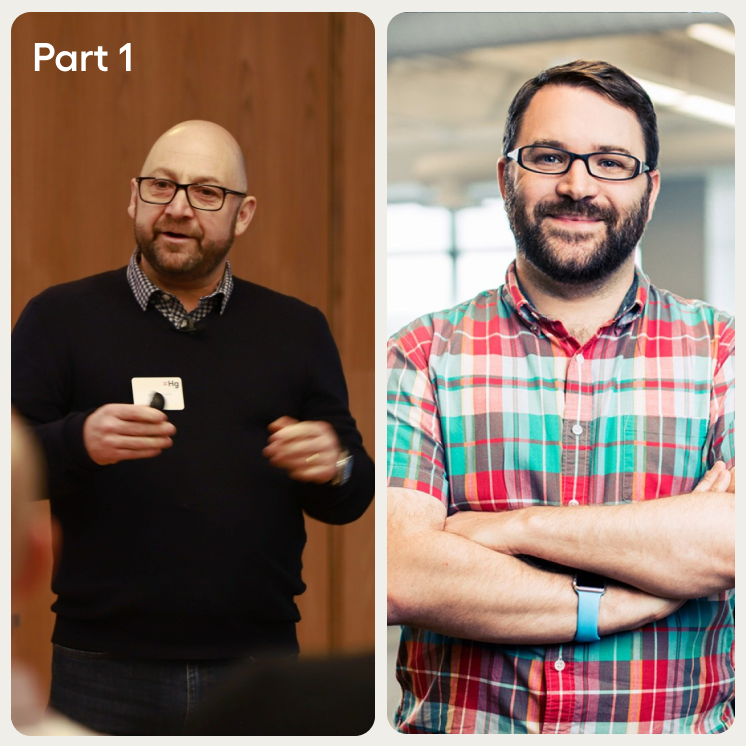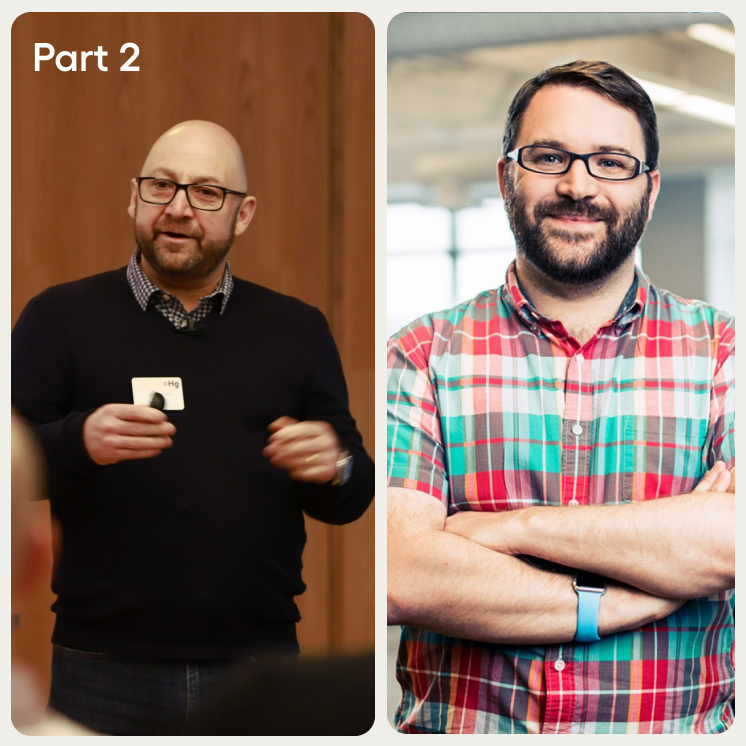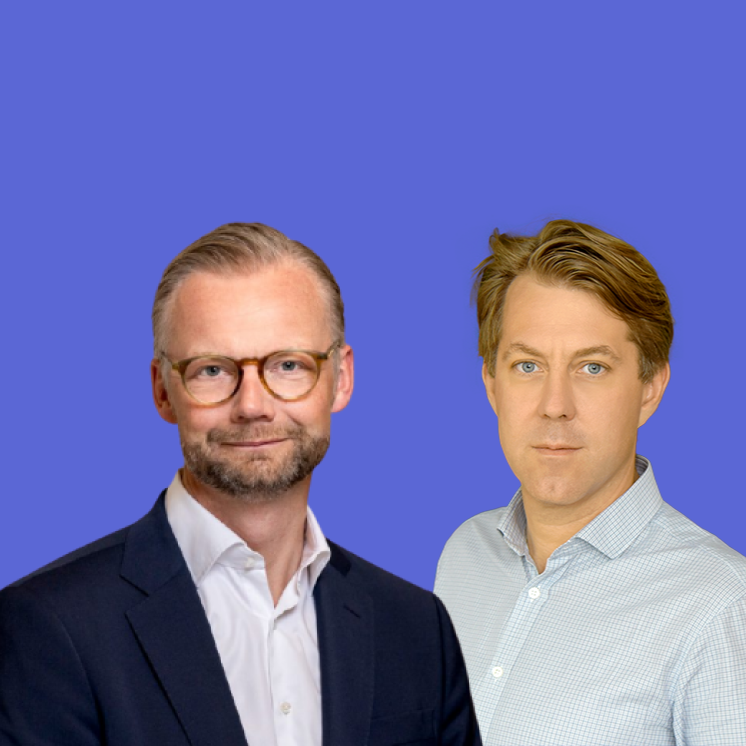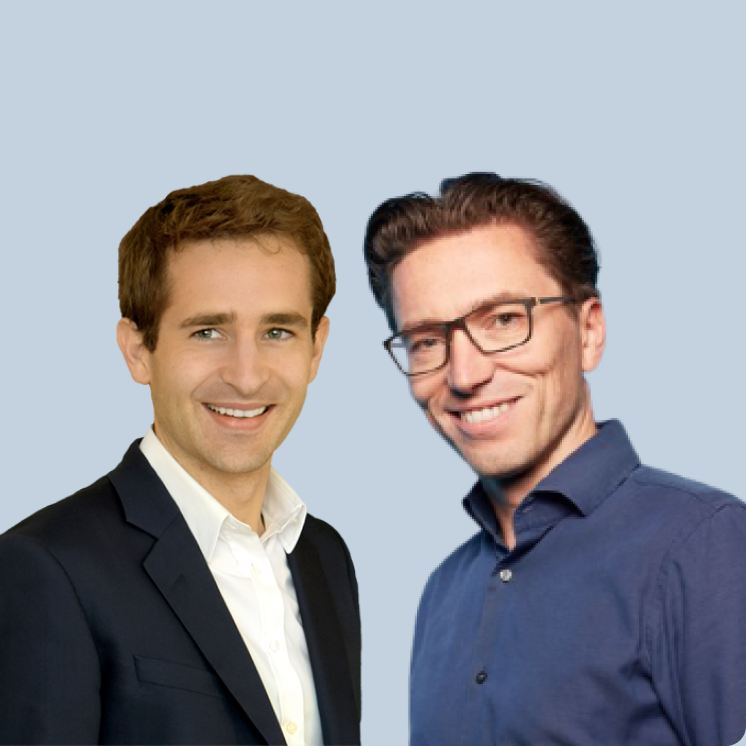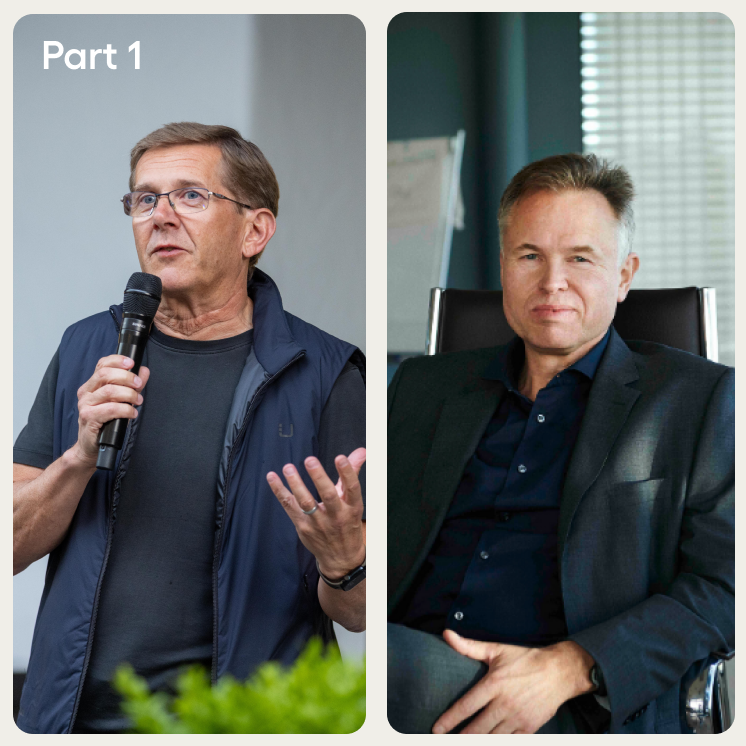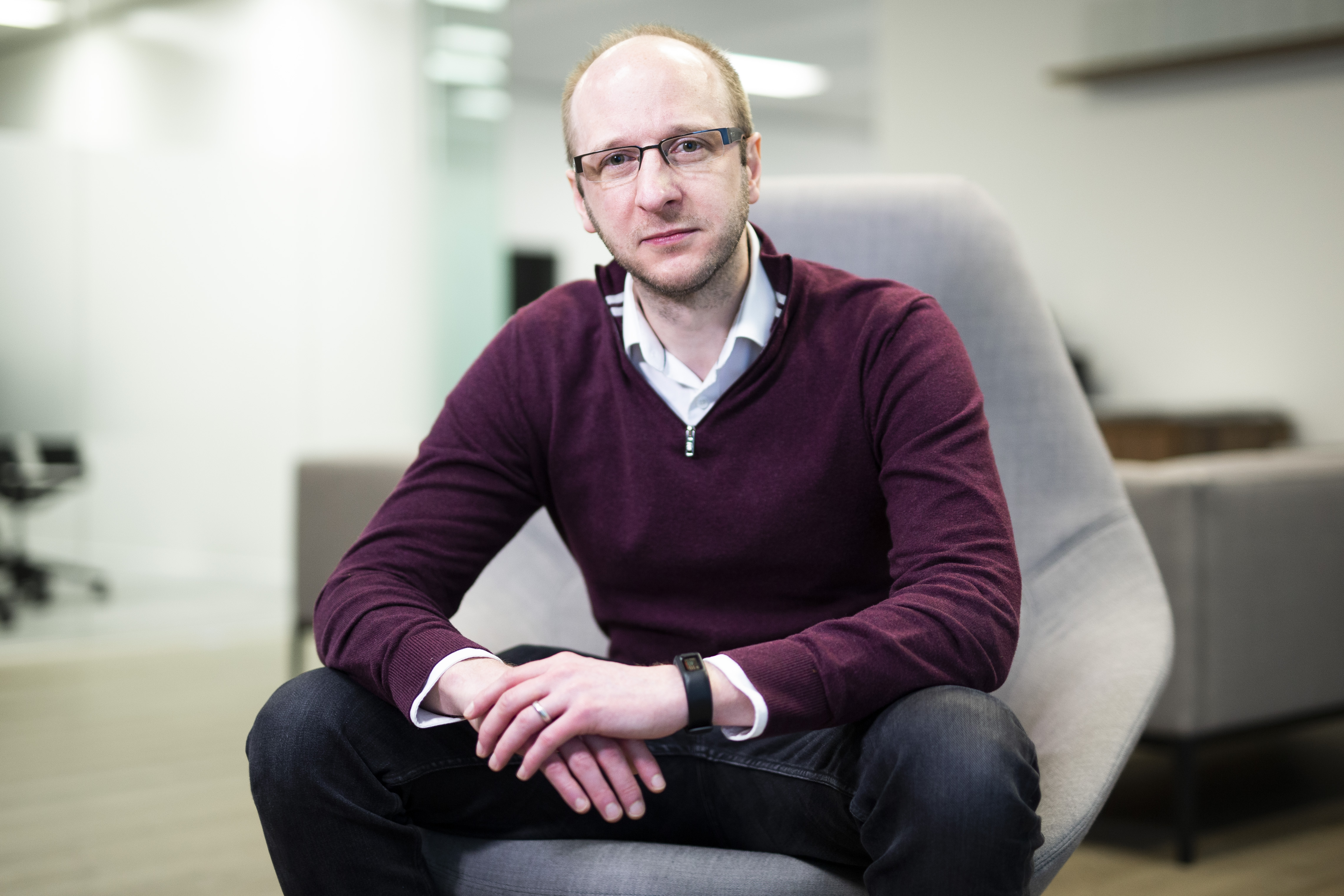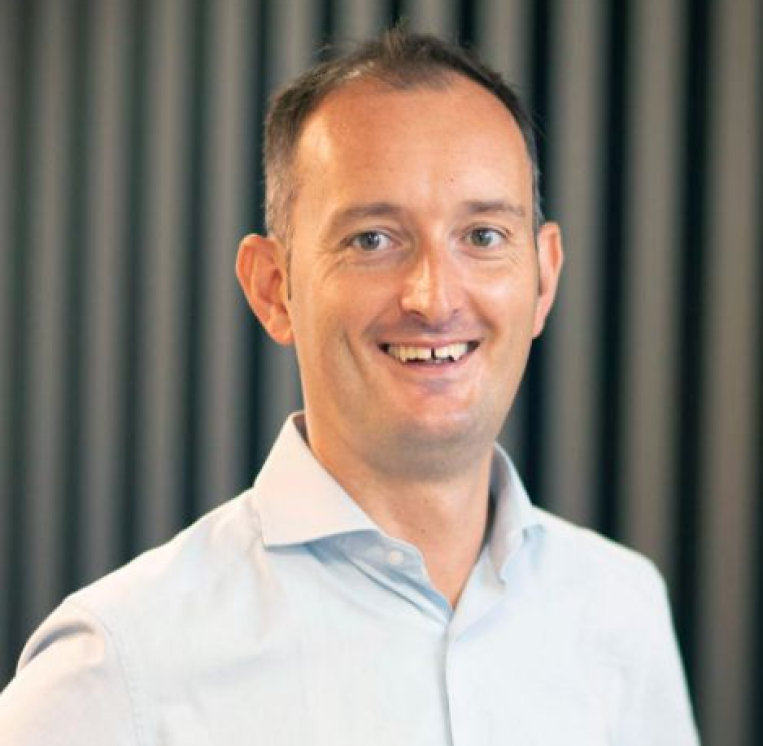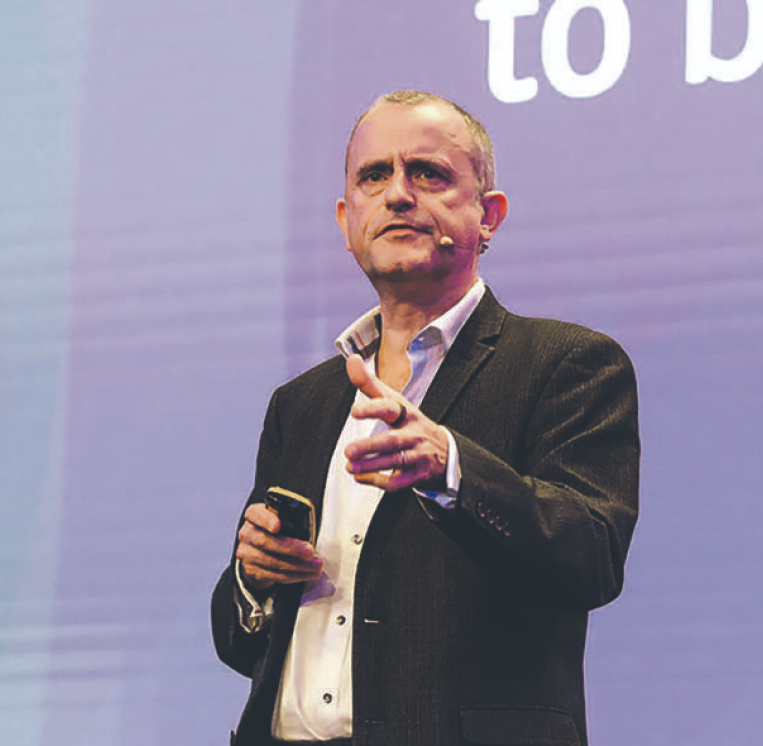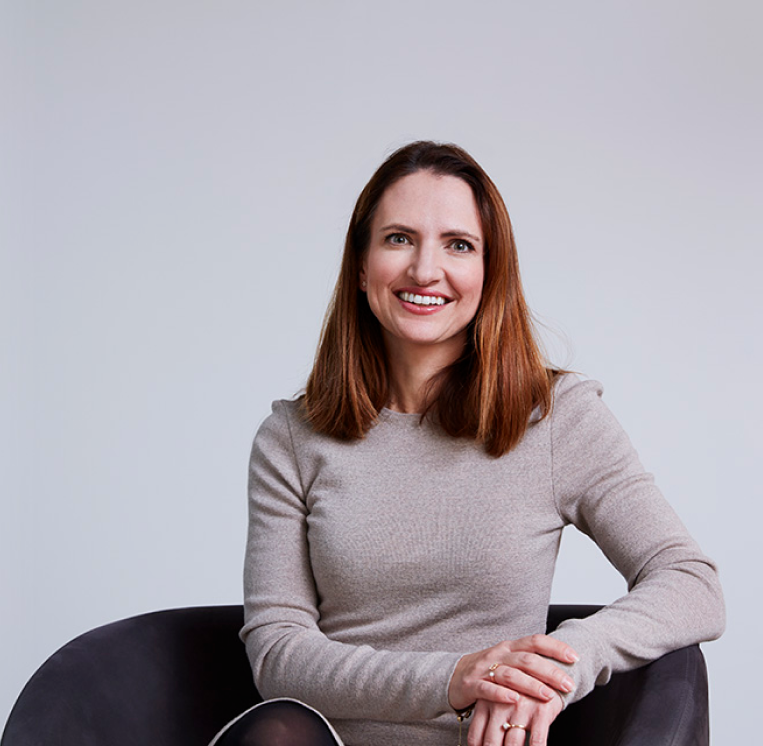Orbit Podcast
Orbit 26
Investors in Enduring Growth
Hg sees the continued growth of software and technology as still just the early stages of a multi-decade trend. Combining ever-increasing performance, productivity and automation, this industry will make our work lives richer and more fulfilling for years to come.
Listen on:
Episode Transcript
Matthew Brockman
So welcome to the latest episode of the Hg Orbit podcast. We’re closing out 2022. So an informal conversation with my friend, Nic Humphries, who is sat on this green sofa opposite me. So Nic, something of a turbulent year perhaps, 2022, what do you take away from it?
Nic Humphries
Well, first of all, thank you for inviting me onto Matthew Brockman’s couch for a bit of year-end therapy. You’re right, it’s been a very, very different year. I think from a software market point of view, you’ve got to really split apart two quite different things that are happening. You’ve got public markets and private markets that are in some ways doing quite different things. And so there’s a big debate about valuations between those two markets right now.
Public markets of course are the price of the marginal share that’s trading. And that’s always going to move around incredibly frequently and in response to the latest sentiment of the markets. Private markets have the advantage of obviously being longer term, being able to look at longer term trends. And often you’re thinking about the value of a whole business, not the value of an individual share. So I think there’s clearly a debate amongst everybody about those relative valuations. But there’s clearly been a sell off in the public markets and obviously private markets tend to lag and are corresponding to that sell off. So big differences between those two in some ways.
And then you’ve also got big differences between profitable and unprofitable tech and software businesses. And if you look back over a long period of history actually, over 15 years, there have always been quite big differences in how people think about profitable and unprofitable tech businesses. And it’s in very rare periods where those two things essentially are, there’s a premium, everybody ignores on profitability, everybody says it doesn’t matter whether you make profits or not. It happened in 99 and it’s going to happen again for about a 15 month period I think between late ’20 and late ’21. Clearly we’re no longer in that abnormal period. So in a lot of ways where the markets have reverted to is where it’s been for most of the last 10 or 15 years. And there’s now a very big dissonance if you’re not a profitable business anymore.
Matthew Brockman
So beyond ’23, how do you see the very long term?
Nic Humphries
I think it’s all about this view we took 20 years ago that software was going to be a tool for good and a tool for increased productivity in a very wide variety of jobs and end markets. And that’s a trend that doesn’t play out in five years or seven years. It actually plays out over multiple decades.
And if you start to look at S-curves of cloud penetration into the end markets that we talk about, tax accounting, healthcare, insurance, et cetera, I think we’re all pretty clear that actually we’re on the upswing of the first part of the S-curve, we’re nowhere near hitting the top end.
So I’m still very, very bullish about the ability for what we do to be positive for the end industries in which we operate. And you’ve obviously got that existential question about, is software doing good or is software cutting jobs out?
I think we can see very clearly that the industries in which our software operates are not decreasing jobs, not decreasing employment, they’re actually increasing jobs and increasing employment. And there’s a lot of data we’ve got to prove that over decades.
So I think it is genuinely cutting out a lot of the more mundane, more laborious tasks that people don’t want to do. Freeing people up to do things that are more creative and more interesting in all the industries that we participate in.
But I’m going to turn it back to you because I know you’re very, very passionate about this and you’re very articulate about it. So what do you think about the long term trends?
Matthew Brockman
I think you’ve got a 30-40 year trend line and we are in the first 10, innings two, innings three as they say with our US colleagues. So you’ve got fundamental Moore’s Law drivers of just performance. You think about the iPhone that’s in your pocket this year versus last year and the iPhone that was in your pocket five years ago, just the sheer level of impact that’s had in terms of people’s workflow and how they can interact and how that’s behaving.
I think you’ve got this productivity question in western economies. So much growth, and the growth has not been that strong, very long term growth is 2%, 3%, 4% GDP growth in these markets. Most of that is immigration. So it’s not been from productivity. And so there’s still this need to think about wage, the standard of living and wages and how you get productivity and how you address that through automation and product. And as you say, make the jobs richer that people are being paid to do, and less mundane and less form filling and back office and more advice or thought or IP led.
And these are just such big trend lines. And then as you know, I mean, the key thing I think we do by having 50 odd portfolio companies and three funds and the scale of the organization we have is say, how can we expose our investors to that five, 10, 15 times a year across 50 odd companies and give them that very long run macro exposure to what is I think probably the most obviously long-term growth part of the economy at scale.
Nic Humphries
And to me this loops back a little bit into the question about valuations and those things as well, which is you’ve got short-term fluctuations, and we obviously have to take those into account. But the bottom line is if you look across the entire portfolio, you look at the sectors in which we operate, the end sectors grow at about three times GDP, 7%, 8%, 9%, pick your individual sector but it’s approximately that versus 2%, 3% GDP growth.
And the companies will be back on average grow organically top line at about 12%, 13%, 14%. So this is fundamentally about long-term growth. It’s been those stats for the last 10, 15 years. So I think all the objective data backs up exactly what you said about this being a 30 plus year trend and we’re in year 10 or something of that order.
Matthew Brockman
It’s something I really noticed actually was coming out of Covid which is you travel again and you go to some of the financial centers, and particularly going to New York in the period probably in the summer and over that period. And the financial discussion of, it’s a market, the market’s down, now’s a buying time, the private equity language of a lot of our peers around the transaction and corporate finance nature of what we do actually jars. You just hadn’t noticed it for a while.
Relative to this idea of long-term investment, equity in long-term compounding businesses. Actually we’re not particularly good or focused on cycles. We want to think about cycles, but we’re not driven by them. We’re not trying to be expert buyers in ’23 and expert sellers in ’21. We’re trying to think about how do we maintain this exposure in the very long term in the wisest possible way for our investors.
Nic Humphries
Yeah. I know we both hate the word deal.
Matthew Brockman
Yeah.
Nic Humphries
I don’t think we’re deal doers in any sense of the word. I try and obliterate it from the language. I think we’re investors. And it’s just fundamentally a different mindset I think.
And I think that is genuinely, again trying to be engineer, I know you’re an engineer as well, trying to be objective about it. If you look at the businesses, the larger size in our portfolio, a number of which we’ve held for seven, 10, 15 plus years, those businesses, we are seeing growing at rates that are at or greater than any time in their history. And I think that’s testament to that longer-term philosophy. And I think it is something of a differentiator for us that I know we’re, you and I are very, very focused on is how can we build more of these businesses that get to five billion, 10 billion enterprise value but actually don’t cap out. They’ve not been profit maximized, they’ve actually been investing in their business, in their employees, in a customer sat, so they can continue growing for the next five to 10 years.
Matthew Brockman
And the other thing I think about is almost 2020 and 2021 were the exceptional years. If you think back, up until 2019, the economy was robust and things were normal trading. But then we suddenly had this period where, into the Covid period, enormous money flows. And so the financial effect of our industry and what people were willing to pay in almost a free money environment was so pronounced in that period. Really almost from March ’20, you can see the spike in valuations. And then it stopping again almost when it was clear that the easing was going to come off very sharply and inflation was coming through. You saw that period, that 18 month period was so pronounced.
Nic Humphries
I think it’s that, isn’t it? It’s the monetary easing, which is probably the right policy response to be honest with you, combined with in the industries that we are in and backing, you suddenly get a huge boost in productivity. And people are at home and therefore usage of SaaS and cloud and all those things gets enhanced as well. So it’s not only monetary policy helps you because money’s free. At the same time, you’ve also got a massive boost in demand side for those businesses that we back as well. Combine those two things together, it’s not that surprising with the benefit of hindsight that you’ve got a real peak for a 12, 15, 18 month period.
Matthew Brockman
How do you think about the impact on our strategy, our longer term strategy for the last two years, what do we take from that?
Nic Humphries
To be honest with you, for me, it’s always been about consistency over frankly a multi-decade period. So our strategy at Hg was born out of all the things that we saw in the 1990s including the dotcom boom and bust in ’97 through to 2001. And we came out of that period frankly, both of us, even you, a lot younger than we are now. And we realized some things we’d done well and some things where we’d made mistakes. And frankly what we tried to do was to build a strategy that took advantage and understood the things that we’d not got right in that period and said, there’s certain types of tech and certain types of software that are actually very robust. They actually perform in good and bad markets. They actually are secularly growing over very long periods of time, that may be not the most sexy, highest growth things, particularly in a bull market, but they actually go through bull and bear periods very well.
So our strategy about B2B, back office, automation and higher productivity in professional and semi-professional jobs, which is a lot of what we do, really is built out of that last upheaval and trying to find businesses that will survive and actually thrive through periods of volatility basically.
So I think we’ve been very, very consistent about what we’ve done. We didn’t get dragged into very high growth deals. We didn’t get dragged into B2C and other areas that weren’t our area of expertise. Does that mean we’ll be completely immune? Of course not, because we’re bound to be affected by the general economy. But I think we’ve tried to insulate ourselves as much as we can from those external factors and frankly leave our investments to be all about how we execute ourself.
Matthew Brockman
The line I’ve often used is we want businesses that are slightly boring on the upside but also slightly boring on the downside. We didn’t have the same peak and trough of extreme excitement in that two year period where the money tap was running crazy. And then you don’t have the same effect when it starts to come off and it starts to abate.
Nic Humphries
I think that’s dead true. I’ve always felt like we don’t look as good when the market’s going completely crazy because we haven’t got investments that are going to double and triple in a one or two year period. But we look relatively strong and highly performant when things are a little bit more tough.
Matthew Brockman
And some of the things we have worked on in 2022, some of the response I guess to the change in the macro environment. Are there are a few things you pull out, things you’ve seen in the portfolio or things you’ve seen our teams do or our leadership teams in our portfolio execute on?
Nic Humphries
I think early on, was to recognize that this might be the case and therefore from a client point of view to return a lot of capital to clients. Which we did. Obviously we’ve been very focused for the last two plus years on DPI, distributed paid in capital, and we’ve been trying to get through exits so we’ve got a relatively young portfolio.
The second thing is to be pretty cautious about the rate of investment. And I think there’s quite a dichotomy emerging between a number of our competitors that have continued through 2022 thinking this was a buy the dip opportunity. And that could be the case. We’ll find out in three, four years time.
We’ve been significantly more cautious than that. And we’ve been incredibly fortunate to be supported by our clients in raising 20 billion plus of new capital in the last 12 months. We believe, we talk about it a lot between us, it’s better to be cautious in an environment where we don’t quite know what’s going to happen. And so I think there’s been a pretty stark contrast between us and some of our competitors this year in terms of capital deployed. And we’ve been on the more cautious end of that. I suspect that’s probably going to continue through into ’23 as well. But I know you’ve got a pretty similar view.
Matthew Brockman
Yeah, the other thing I would highlight I guess is just the work that’s gone in in the portfolio in the last 12, 24 months. So there’s an awful lot of work obviously from the teams that are leading our companies, for which we’re enormously grateful during this period.
I think the other thing is, if I think about our portfolio team, I was with a bunch of the CEOs and chairs in the US about a month ago, and they were highlighting work we’d done on pricing and inflation protection, how you think about these businesses reacting to a market where getting 2% or 3% or 4% price increases every year was a real win. And now you are thinking about, well, my labor costs are going to go up by 7%, how do I react to that? And how do I systematically address that?
And we’ve done that across 50-odd portfolio companies. And the feedback obviously from the recipients of the work was encouraging just to how important that had been during this year.
Nic Humphries
Yeah, I think actually I was just reflecting on it the other day. You think about what our chief execs have had to cope with in the last three years, you’ve had a pandemic which was I don’t think predicted by many of us, which was a shock of global scale. And somehow you’ve got to react within weeks to a situation where nobody’s working, everybody’s got to work remotely, customer support, all those things. It’s amazing frankly how the chief execs and their teams managed to react so fast and so well. And we continued growing every quarter every year through that period.
Now I think you’ve got an equally difficult point, for the first time in living memory or certainly most of our careers, you’ve got inflation at a level we’ve never seen, you’ve got interest rates going back to a level we have seen, but it’s 15 years ago. And you’ve got to somehow manage both price inflation, which we just talked about, but also cost management. And I think, obviously I don’t want to imply that people aren’t managing costs historically, but I think cost management and how you think about cost in relation to revenues that are growing well at the moment, but are pretty uncertain six, nine, 12 months out. I think it’s a really difficult task.
So we’re spending a lot of time just trying to talk that through. Frankly trying to look at some of our chief execs that have been through cycles like this before that are in their fifties and sixties and have actually seen things like this. And trying to pull on their experience for how they can talk through some of those issues with maybe people that haven’t been through that before in their career.
Matthew Brockman
You talked briefly before about our thanks and our gratitude to our investors who’ve supported us this year. Hg more broadly, other things we’ve been working on as we’ve thought about this year in preparing ourselves for the future.
Nic Humphries
I guess the number one thing is, when you’ve had that level of support from clients that have stuck with us through previous difficult periods as well. In ’09 we had terrific support from our clients as well. First of all, you just got to say thank you very much indeed, be appreciative.
I think you’ve got to also stick to the knitting, which is what we tried to do. And I think you, lastly, have got to have a strategy that you think is respectful of what’s happening to clients and their balance sheets and their needs.
So I think we said very clearly when we were raising the capital in late ’21, early ’22, that we were going to be deploying that capital over a three to four year period. And we weren’t intending to come back quickly. That’s probably a fairly common message now from people. But I think we were saying that nine, 12 months ago. And I think it’s that discipline to do what we said, invest over a three or four year period, make sure we’ve got a degree of, not at the top of the cycle, there’s a spread across multiple vintage years and those things is really important.
Matthew Brockman
I think the other thing I guess I’d highlight is just continue to invest in our own business. If I think about how many … we’ve added another probably 80-100 people this year. Our portfolio team is probably 50% larger than it was this time last year. The capability of that team in terms of how far it stretches I think has stepped up. We’ve opened two offices this year in terms of our scope in San Francisco and what we now do from Paris. So I guess as a private company, that support, we’re trying to translate into how do we continue to invest, how do we try and innovate, how do we challenge ourselves to improve every year, how do we get those marginal gains in an evolving market and evolving industry? We’ve always got to try and think about how we can be better in 2023 than we were in 2022 and beyond.
Nic Humphries
Yeah, I always tend to look at ratios of things like portfolio companies per partner or portfolio companies per executive. And partner numbers that are approaching 25 plus. We’ve got 150 people across our executive and portfolio operations group. So with 50-ish companies in the portfolio, you’re talking about two per partner, you’re talking about 0.3 of a portfolio company per executive. They’re pretty attractive ratios.
So that when you get into a period that’s going to be more difficult, and where we’ll inevitably have some things that we need to go and deal with. First of all, our strategy means that that will probably be single digit numbers of companies that we’ve got to deal with and really help out. It won’t be half the portfolio, it’s much more likely to be four, five, six companies. And I think that’s, between you and I, the numbers we’re seeing at the moment.
And then you’ve got really huge resources to be able to go help those companies. So if we need to parachute 10 or 15 people in to really help sort something out, which hopefully is not the case, but if it is, we’ve got the resources there.
And I think if you think back to the GFC that we worked through, it was pretty much the same then. We had a few things we had to sort out, but it was four or five things out of 30 or 40. It wasn’t 25 or 30 things that we needed to go and deal with. So that investment in resources relative to the portfolio size I think is incredibly important.
Matthew Brockman
You’re touching a bit there on 2023 as opposed to 2022. And obviously it doesn’t feel like ’23 will be particularly easier than the year we’ve just experienced. Any key themes in terms of next year and how we think about investment, portfolio, other themes in the business?
Nic Humphries
Portfolio, protect the portfolio, look after the portfolio, number one. So I think you first got to go to making sure that, we are obviously very fortunate that we’ve got a track record where we’ve impaired less than 1% of capital over the last 20 years, and we have a very high proportion of our investments that return 2x or 20%. I think it’s 93% or something in the last count for the last 20 years. So that record is very valuable to us.
And we think our strategy’s been geared towards delivering that in the future. But clearly at times like this you get really tested. So first point is, portfolio from a negative point of view, which we all know, focus on where we might have some issues.
I think in doing so though, you have to also then flip entirely the other way and also look at the portfolio companies that actually are sufficiently strong, well capitalized, with great management teams, cash on the balance sheet, lots of facilities. And because we back a number of companies that are very acquisitive, I think in a more muted economy, organic growth will clearly be harder to come by at some point in ’23 or ’24 I think.
But actually that gives those companies that are M&A focused a real opportunity to go and buy some great companies that perhaps weren’t available a year or two years ago. Venture backed, plenty of capital around, weren’t going to sell out to M&A. And now, particularly because I think of the style of companies we back, which are actually great for entrepreneurs to sell to, and actually become part of a larger group, I think there’s some really good opportunities for some of our bigger platform companies to buy great businesses at fair and reasonable prices in ’22 and ’23.
Matthew Brockman
And I think it’s also fair to say we will continue to try and invest capital during ’23 I guess in new deals, but being more cautious, with a much more cautious stance. So if we think about, how you think about the macro impacts on buying decisions, purchasing decisions, pace of growth, inflation we’ve talked about, again, so we’re not really the great traders, we’re not trying to absolutely time markets to buy at the bottom and sell at the top. In fact we’re probably the opposite of that. We are very much much more longer term. So that caution around how we think about …
And also it feels like LPs don’t want us to be throwing money around, they’re somewhat thinking about how do we continue to capital back, how do we continue to see money back from you all, how do we deploy carefully in this market and thoughtfully, not in a rush to try and time a market cycle.
Nic Humphries
Yeah, I think that’s back to … look, we said very openly we’ll try and deploy capital over a roughly three year period. In very good, accelerated markets that becomes maybe two and a half years, which I think is the shortest period we’ve had for a fund investment. And in slower, more tough markets for new investment, I think it becomes four years. And that’s I think what we’ve done on every fund for the last 20 plus years.
So I think it’s a continuation again of that strategy. Is it right to be a bit more cautious in ’22 given what we saw early ’22? Yes, it was. And that’s what we’ve been. I think, I think we both think, that continues into ’23. And it’s just because I think it’s just too difficult to predict what the economy in ’23 brings. It could turn out that actually this is a fairly benign dip and we are going to come out of it in ’24. Frankly it could be much worse than GFC and it might continue longer and maybe even deeper.
And certainly I’m not bright enough to figure which one of those it is from a macroeconomic point of view. And I think in those scenarios where you’re not really sure, better for us, better for our LPs, to have the cash in the bank as it were and frankly take it pretty cautiously.
There’ll always be opportunities. We’ve got a big enough portfolio and a great team, so there’ll always be opportunistic good opportunities for us to find chances to invest in a special way. I just think it’s going to be more muted than it has been in previous years.
Matthew Brockman
And the other thing I think about is, certainly in Europe and the US, you’re going to see some squeeze on living standards and so on, so just being again responsible investors who think about the 60,000 people who work in our portfolio companies, the 400 people that are employed our business, how we think about their welfare, how we think about the foundation and continuing to … that’s obviously very well funded given the amount of money that’s gone back to clients this year. And again, so how that’s been used in terms of education and social growth. Because we know that’s focused on trying to give people technology jobs for the young. So again, having that be a theme which continues to resonate very heavily in our business over the next year as well I think is important for us and for our investors.
Nic Humphries
Yeah, I think if you take it outside the little world that we live in, which is purely in software, we’re clearly incredibly fortunate and there’s just a lot of people that are going to have a very, very tough time for reasons nothing to do with themselves, about energy price hikes and frankly government policies two, three months ago that have hit them pretty poorly.
And I think we just have to do everything we possibly can, within the businesses that we own, I think we’re able to do that very directly. And I know a number of our businesses have put in place crisis funds, thinking very carefully about how we can provide extra bonuses or other facilities to match the cost of living increases that people have got. And I know we’re trying to do that everywhere across the portfolio. I think that’s entirely right for us. And it’s in obviously the interests of our employees, but ultimately in the interests of our clients as well to have businesses that do that and are long term about how they think about employee welfare.
Matthew Brockman
So as we close out 2022, any particular memories or comments you’d make to anybody in our firm or more broadly?
Nic Humphries
I think from the firm point of view, we’ve clearly been very fortunate and we’ve had an opportunity to grow very significantly. We’ve had great, great support from our clients for which we’re eternally grateful. And I think we’ve got some really interesting opportunities for us, particularly obviously in a number of the new offices, as you say, Paris and our move into France. And obviously US more generally, and particularly the San Fran office that we’ve opened in the last three or four months. We’re very serious about those investments. They’re very long term for us. And I think they represent really exciting opportunities for us to do even more in those countries than we have done historically.
So I remain cautious in the short term based on what the economy’s going to throw at us, but very optimistic in the medium to long term because I think we’ve got a great foundation. And frankly I just think we need to keep our feet on the ground and make sure we continue putting back and helping in the ways that we’ve talked about at the same time as grown our firm.
Matthew Brockman
Well, great. Thanks, Nic. And I’ll probably just take one last chance as say thanks to all of our team and our staff as well for everything they’ve done this year. It’s been a big year again. And people work incredibly hard in our business and in our businesses more broadly, in our portfolio. So thank you to every single one of those people.
Nic Humphries
Hundred percent agree. Absolutely.
Orbit episodes
Orbit Podcast
The 3 speed problem: Oji Udezue on CPO leadership in the age of unlimited engineering
Episode detailsOrbit Podcast
Fevered determination: Building Zalos from zero to enterprise in 5 weeks
Episode detailsOrbit Podcast
Trust, velocity, and building the Answer Engine: Dmitry Shevelenko of Perplexity speaks to Farouk Hussein
Episode detailsOrbit Podcast
The long road to the last mile: Nic Humphries and Matthew Brockman reflect on 25 years of Hg
Episode detailsOrbit Podcast
AI, Control Points, and the Next Wave of Vertical SaaS with Tidemark Capital founder, Dave Yuan
Episode detailsOrbit Podcast
A glimpse of the next generation: Zoe Zhao and Annalise Dragic of Azlin Software
Episode detailsOrbit Podcast
The business case for AI: Brent Hayward of Salesforce, David Carmona of Microsoft & Nagraj Kashyap of Touring Capital
Episode detailsOrbit Podcast
Mastering the billion-dollar software playbook: Joe Lonsdale of 8VC & Eric Poirier of Addepar
Episode detailsOrbit Podcast
